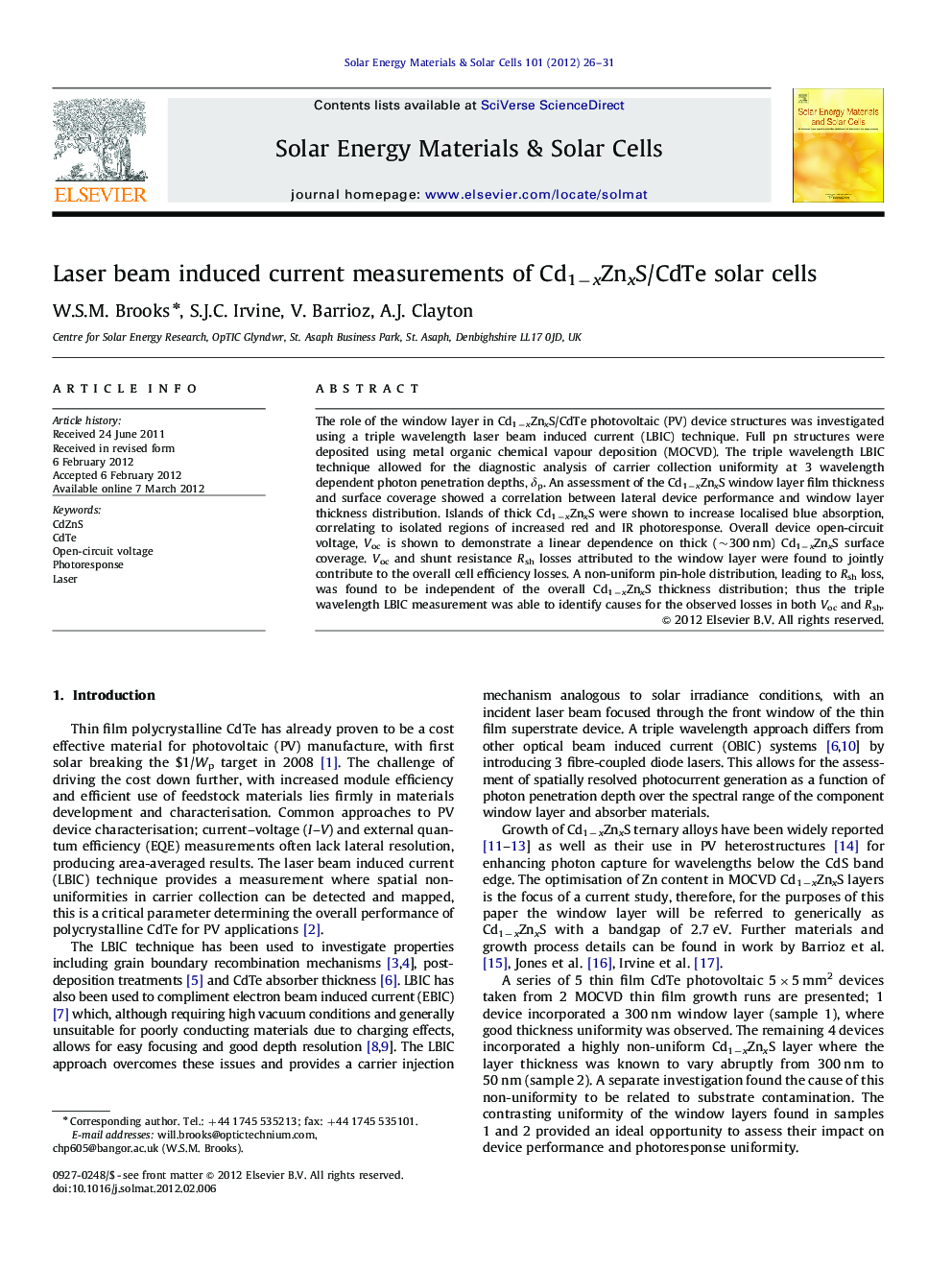| Article ID | Journal | Published Year | Pages | File Type |
|---|---|---|---|---|
| 79270 | Solar Energy Materials and Solar Cells | 2012 | 6 Pages |
The role of the window layer in Cd1−xZnxS/CdTe photovoltaic (PV) device structures was investigated using a triple wavelength laser beam induced current (LBIC) technique. Full pn structures were deposited using metal organic chemical vapour deposition (MOCVD). The triple wavelength LBIC technique allowed for the diagnostic analysis of carrier collection uniformity at 3 wavelength dependent photon penetration depths, δp. An assessment of the Cd1−xZnxS window layer film thickness and surface coverage showed a correlation between lateral device performance and window layer thickness distribution. Islands of thick Cd1−xZnxS were shown to increase localised blue absorption, correlating to isolated regions of increased red and IR photoresponse. Overall device open-circuit voltage, Voc is shown to demonstrate a linear dependence on thick (∼300 nm) Cd1−xZnxS surface coverage. Voc and shunt resistance Rsh losses attributed to the window layer were found to jointly contribute to the overall cell efficiency losses. A non-uniform pin-hole distribution, leading to Rsh loss, was found to be independent of the overall Cd1−xZnxS thickness distribution; thus the triple wavelength LBIC measurement was able to identify causes for the observed losses in both Voc and Rsh.
► Carrier collection uniformity in CdTe solar cells measured using an LBIC system. ► Cd1−xZnxS/CdTe solar cells grown using MOCVD. ► Cd1−xZnxS surface coverage and thickness uniformity is examined. ► Device Voc found to be heavily dependent on Cd1−xZnxS surface coverage. ► Complex pin-hole clustering found to impact Rsh of all cells examined.
